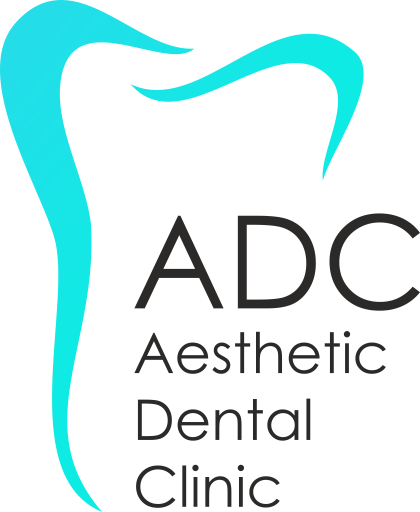Contents
Do your teeth have discoloration?
Why do teeth change color?
Your teeth can change color from stains on their outer surface or internal pigments on their structure. There are three main types of tooth discoloration.
1. External factors
This has to do with the outer surface of the tooth enamel, which is stained by pigments found in the foods and drinks we consume, such as the consumption of cola drinks, herbs such as tea, chamomile, sage, coffee, cigarette (from the most serious pigmentation agents), red wine, foods that have red pigments, such as beetroot, red fruits, cherries, strawberries, black berries, red grapes (of course, abuse is what hurts, not simple use). Always in combination with each person’s tooth type and genetic predisposition.
External factors include poor oral hygiene, such as when one does not brush their teeth and use no dental floss.
Bad habits, such as biting our lips, our cheeks, our nails or various objects, such as pencils, pens, straws, ice cubes, labels, clothes, even some electricians bare the cables with their teeth. All of this creates micro-cracks in the teeth and as a result pigments are installed inside them.
Bulimia through tooth erosion creates discoloration. Bulimic may be any man, but the problem mainly concerns young girls. This is a psychiatric and psychological problem. These people drink a lot of soda to digest and also vomit a lot, resulting in all the acids coming up from the stomach, as well as those entering the mouth, causing erosion. In addition, to remove the acidic taste, the teeth are brushed directly and while the enamel is soft, it erodes and disappears over time from the teeth.
Corroded teeth, because they are rough, easily pick up pigments from what we eat and drink and this results in bad teeth discoloration.
2. Internal factors
This has to do with the inner surface of the tooth, the dentin, which becomes darker or takes on a deep yellow color. In extreme cases it turns deep black. This discoloration can occur in the following cases:
- Excessive exposure to fluoride during childhood. This is often the case in some areas where their water contains too much fluoride.
- In taking tetracycline – doxycycline antibiotic during the second half of the pregnancy period.
- In use of tetracycline – doxycycline antibiotic during childhood, i.e. from 8 years and below.
- In a tooth trauma during childhood, that is, a child’s front permanent teeth fell and struck before their development is complete, then they take on a darker color.
- In tooth trauma at older ages permanent teeth are present. In this case the tooth becomes dead and changes color. Usually the color changes gradually from light black to very deep black.
- Genetic abnormalities, syndromes and other serious diseases that cause white or dark spots. It is genetically prescribed that some people’s teeth are lighter or thicker than others and thus more resistant to discoloration.
- Incomplete amelogenesis- incomplete odontogenesis. They cause discolorations in shades of gray, amber and purple, and they are very difficult to go away. Usually the teeth are abraded and fitted at the end.
- In severe diseases, where patients radiate head and neck, as well as in patients undergoing chemotherapy as they are the cause of discoloration.
- In the use of antihistamines, antidepressants, serious mental illnesses and high blood pressure medications.
- In oral solutions containing chlorhexidine. The dentist gives these solutions for a short period of time in cases of gingivitis and periodontitis, but if they continue to be used for a long time then they cause tooth discoloration, but they leave with a simple polishing of the teeth by the dentist.
- In endodontically treated teeth.
- In teeth with old amalgam fillings (black fillings). Just the dentist replaces the old black filling with a new white filling.
- In very bad oral hygiene.
- Age of the patient
Is a combination of external and internal factors. The inside of the tooth, that is, the dentine gets darker with age and over time. The outside of the tooth, i.e. the enamel becomes thinner due to abrasion and erosion over the years and more transparent. This makes the inside of the tooth look more yellow, which of course is more yellow and darker over time. Due to the cracks, abrasion and corrosion over time we also have pigments deposited on and within the surface of the enamel from foods, drinks, cigarettes, and so things get even darker.
How the discoloration of teeth occurs?
Everything starts after brushing the teeth and while they are clean immediately afterwards a film of salivary glycoproteins begins to form. This is also the dental plaque, which can be removed by brushing and flossing. Food, drinks and salts of saliva are then collected on the dental plague. This makes the dental plaque harder, that is to say, the so-called stone or tartar. It is white in its early stages, because food and beverage dyes have not yet been installed, but after some time it begins to color and turn dark, so we have the pigments combined with stone. The stone cannot be removed by brushing but only with the help of your professional dentist.
How can you stop (prevent) the discoloration of your teeth?
It’s simple: You need to change your lifestyle. Quitting smoking, minimizing the consumption of food with lots of pigments, limiting coffee, colas, herbs and of course the most important is brushing your teeth and using dental floss after every meal properly.
Nonetheless, every six months you should visit your dentist for a six-month professional dental stone cleaning.
If you are somewhere where you cannot brush your teeth after eating or drinking, it is best to rinse your mouth with clean water.
In the event of a tooth injury, you should go to the dentist directly to see if the tooth is non-vital, which means that endodontic treatment must be done before it can darken the tooth and get this dark, unsightly color.
However, decayed teeth usually get a darker color. We cannot avoid this many times, except by covering them with some hoops.
In the past few years there have been some toothpastes that help remove pigments, but always with the proper guidance of your dentist. Never use such products on your own as they can damage your teeth.
How can you treat discolored teeth?
At home alone
In your home you can use a dental floss and a frequent and proper brushing with the appropriate toothbrushes, toothpastes and mouthwashes provided by your dentist. Outside the house you can simply rinse your mouth thoroughly with clean water and chew on some toothpaste that you have purchased from the pharmacy.
With the help of your dentist
The first option is always polishing. At our dental clinic we apply the Swiss protocol for tooth discoloration, which is done with a special Swiss air polisher to maximize the removal of tooth discoloration.
The procedure is simple, easy, has no pain and lasts no more than 20 minutes. It’s like throwing a spray of water and air.
Air polishing includes special erythritol particles that remove pigment and dental plaque and does not injure the gums at all.
This technique is usually performed during tooth cleaning, gingivitis and periodontal laser treatment.
If the patient has high aesthetic requirements and wants his or her teeth to be whitened (always with a natural smile) we can go a step further and consider with the patient other treatments such as:
- Microabrassion
- Resin veneers
- Porcelain veneers
- Bleaching of vital teeth
- Bleaching of non-vital teeth
- All-ceramic crowns
When should you go to your dentist?
Teeth discoloration is primarily a cosmetic problem. Visit your dentist if you are not happy with the appearance of your teeth. Any change in the color of your child’s teeth should be evaluated by a dentist.
Prognosis of tooth discoloration
Prognosis is important for exogenous pigments. For endogenous pigments it is more difficult to remove and may take longer to for the teeth to get whitened.



